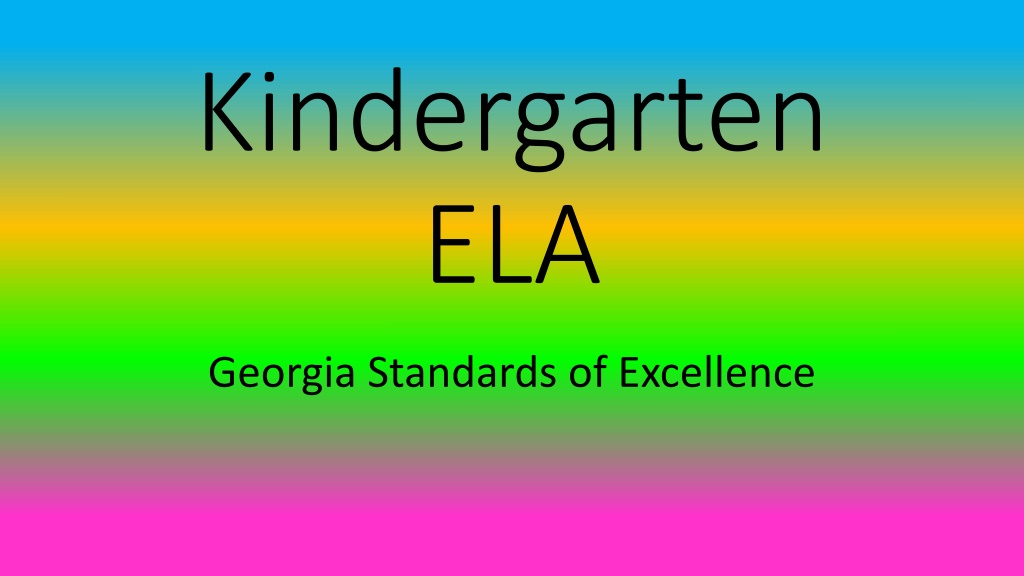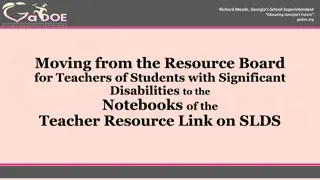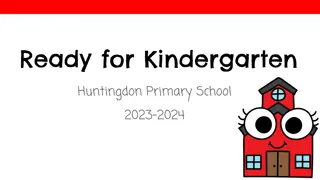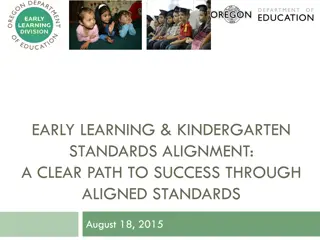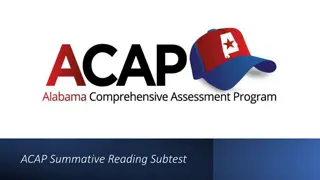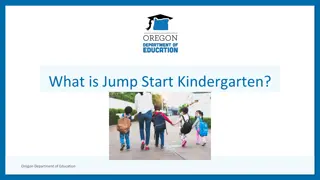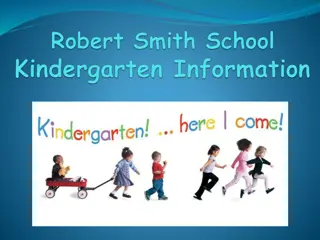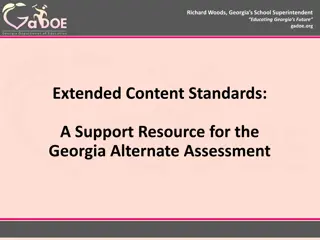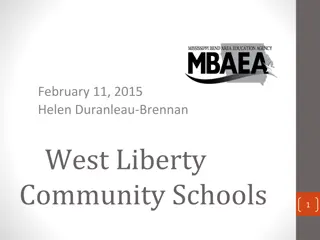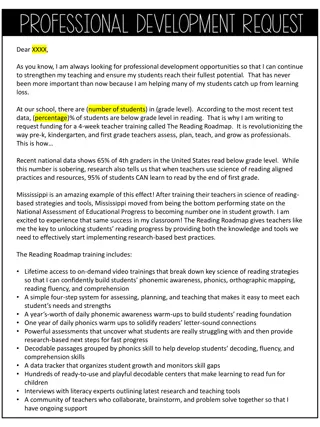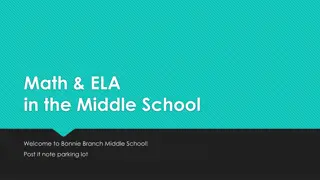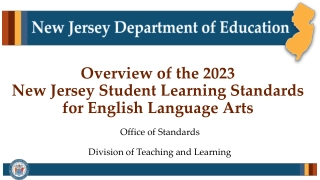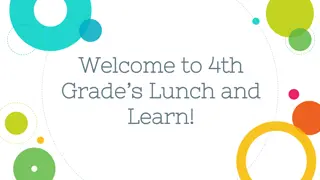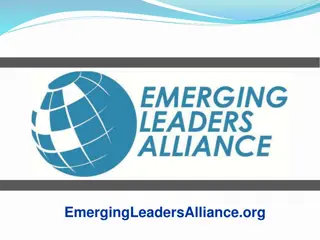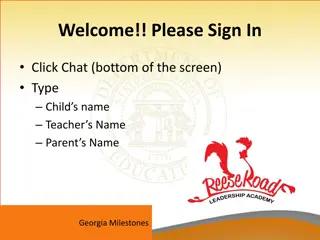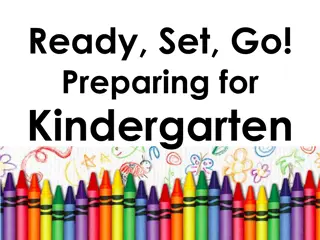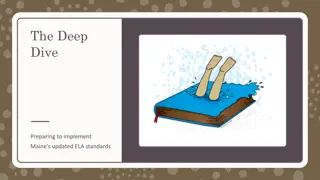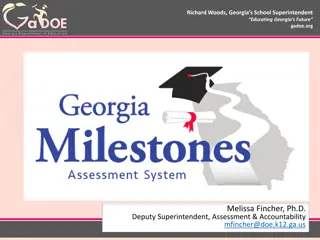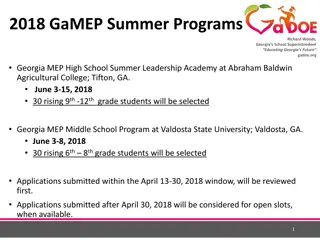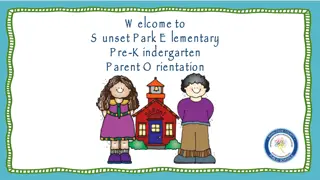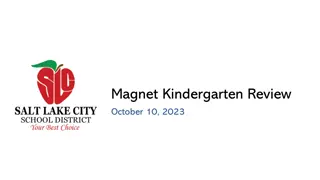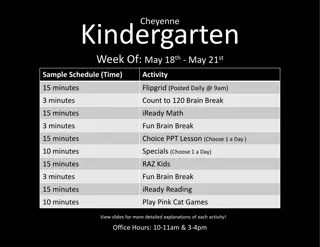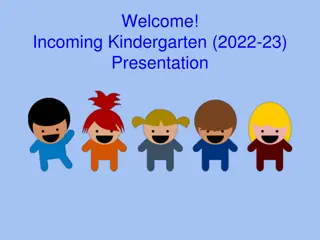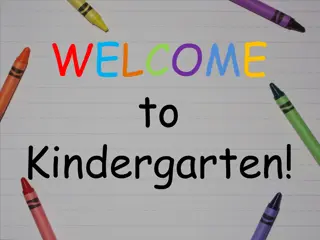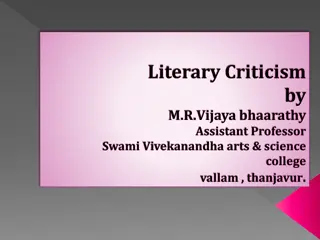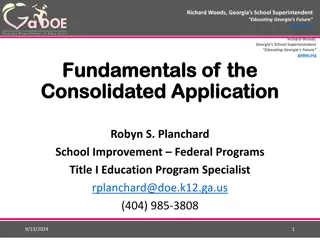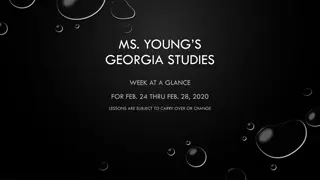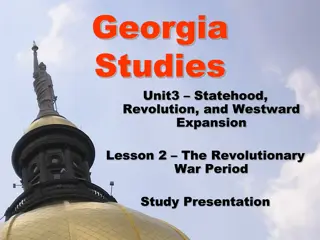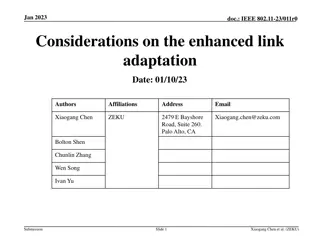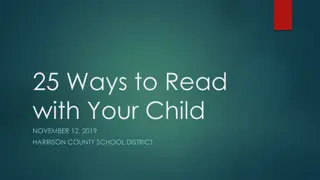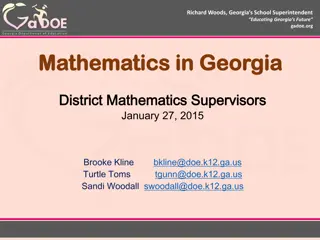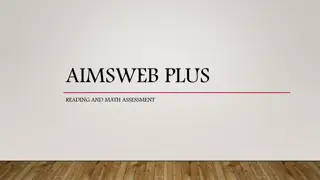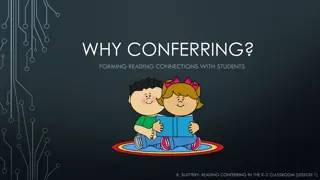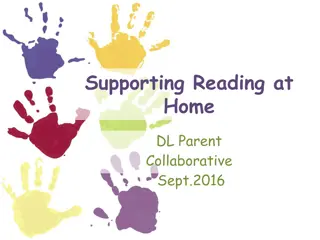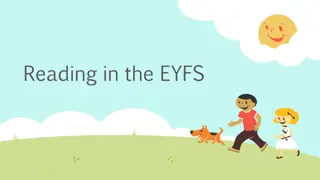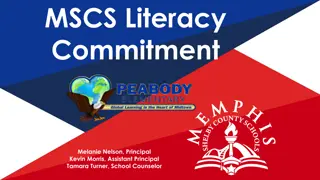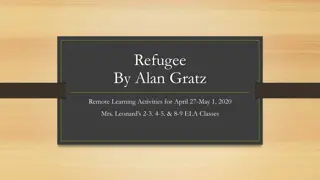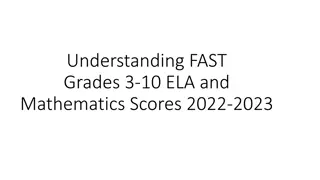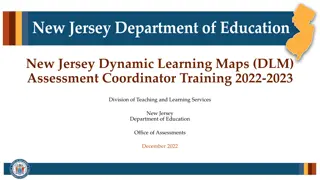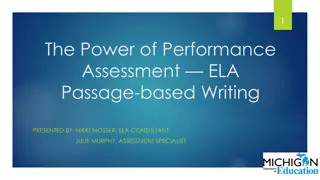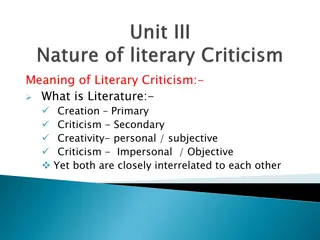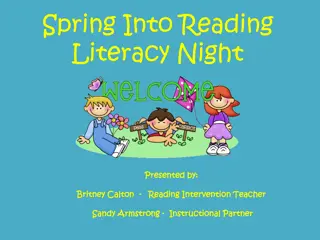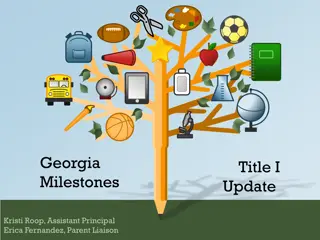Kindergarten ELA Georgia Standards of Excellence - Reading Literary Skills
Explore the Kindergarten ELA Georgia Standards of Excellence for Reading Literary Skills, including key ideas and details, retelling stories, identifying characters and settings, recognizing text types, and integrating knowledge and ideas through illustrations and story relationships. Develop skills in asking questions, answering, retelling, and comparing character adventures.
Download Presentation

Please find below an Image/Link to download the presentation.
The content on the website is provided AS IS for your information and personal use only. It may not be sold, licensed, or shared on other websites without obtaining consent from the author. Download presentation by click this link. If you encounter any issues during the download, it is possible that the publisher has removed the file from their server.
E N D
Presentation Transcript
Kindergarten ELA Georgia Standards of Excellence
Reading Literary Reading Literary Key Ideas and Details
ELAGSEKRL1 ELAGSEKRL1 With prompting and support, ask and answer questions about key details in a text.
ELAGSEKRL2 ELAGSEKRL2 With prompting and support, retell familiar stories, including key details.
ELAGSEKRL3 ELAGSEKRL3 With prompting and support, identify characters, settings, and major events in a story.
Reading Literary Reading Literary Craft and Structure
ELAGSEKRL4 ELAGSEKRL4 With prompting and support, ask and answer questions about unknown words in a text.
ELAGSEKRL5 ELAGSEKRL5 Recognize common types of texts (e.g., storybooks, poems)
ELAGSEKRL6 ELAGSEKRL6 With prompting and support, name the author and illustrator of a story and define the role of each in telling the story.
Reading Literary Reading Literary Integration of Knowledge and Ideas
ELAGSEKRL7 ELAGSEKRL7 With prompting and support, describe the relationship between illustrations and the story (how illustrations support the text).
ELAGSEKRL9 ELAGSEKRL9 With prompting and support, compare and contrast the adventures and experiences of characters in familiar stories.
Reading Literary Reading Literary Range of Reading and Level of Text Complexity
ELAGSEKRL10 ELAGSEKRL10 Actively engage in group reading activities with purpose and understanding.
Reading Reading Informational Informational Key Ideas and Details
ELAGSEKRI1 ELAGSEKRI1 With prompting and support, ask and answer questions about key details in a text.
ELAGSEKRI2 ELAGSEKRI2 With prompting and support, identify the main topic (main idea) and retell key details of a text (supporting details).
ELAGSEKRI3 ELAGSEKRI3 With prompting and support, describe the connection between two individuals, events, ideas, or pieces of information in a text.
Reading Reading Informational Informational Craft and Structure
ELAGSEKRI4 ELAGSEKRI4 With prompting and support, ask and answer questions about unknown words in a text.
ELAGSEKRI5 ELAGSEKRI5 Identify the front cover, back cover, and title page of a book.
ELAGSEKRI6 Name the author and illustrator of a text and define the role of each in presenting the ideas or information in a text.
Reading Reading Informational Informational Integration of Knowledge and Ideas
ELAGSEKRI7 ELAGSEKRI7 With prompting and support, describe the relationship between illustrations and the text (how the illustrations support the text).
ELAGSEKRI8 ELAGSEKRI8 With prompting and support, identify the reasons an author gives to support points in a text.
ELAGSEKRI9 ELAGSEKRI9 With prompting and support, identify basic similarities in and differences between two texts on the same topic (e.g., in illustrations, descriptions, or procedures).
Reading Reading Informational Informational Range of Reading and Level of Text Complexity
ELAGSEKRI10 ELAGSEKRI10 Actively engage in group reading of informational text with purpose and understanding.
Reading Reading Foundation Foundation Print Concepts
ELAGSEKRF1 ELAGSEKRF1 Demonstrate understanding of the organization and basic features of print. a) Follow words from left to right, top to bottom, and page- by-page.
ELAGSEKRF1 ELAGSEKRF1 Demonstrate understanding of the organization and basic features of print. b) Recognize that spoken words are represented in written language by specific sequences of letters.
ELAGSEKRF1 ELAGSEKRF1 Demonstrate understanding of the organization and basic features of print. c) Understand that words are separated by spaces in print.
ELAGSEKRF1 ELAGSEKRF1 Demonstrate understanding of the organization and basic features of print. d) Recognize and name all uppercase and lowercase letters of the alphabet.
Reading Reading Foundation Foundation Phonological Awareness
ELAGSEKRF2 ELAGSEKRF2 Demonstrate understanding of spoken words, syllables, and sounds (phonemes). a) Recognize and produce rhyming words.
ELAGSEKRF2 ELAGSEKRF2 Demonstrate understanding of spoken words, syllables, and sounds (phonemes). b) Count, pronounce, blend, and segment syllables in spoken words.
ELAGSEKRF2 ELAGSEKRF2 Demonstrate understanding of spoken words, syllables, and sounds (phonemes). c) Blend and segment onsets and rimes of single-syllable spoken words.
ELAGSEKRF2 ELAGSEKRF2 Demonstrate understanding of spoken words, syllables, and sounds (phonemes). d) Isolate and pronounce the initial, medial vowel, and final sounds (phonemes) in three- phoneme (consonant-vowel-consonant, or CVC) words. (This does not include CVCs ending with /l/, /r/, or /x/.)
ELAGSEKRF2 ELAGSEKRF2 Demonstrate understanding of spoken words, syllables, and sounds (phonemes). e) Add or substitute individual sounds (phonemes) in simple, one syllable words to make new words.
Reading Reading Foundation Foundation Phonics and Word Recognition
ELAGSEKRF3 ELAGSEKRF3 Know and apply grade-level phonics and word analysis skills in decoding words. a)Demonstrate basic knowledge of one to one letter-sound correspondences for each consonant.
ELAGSEKRF3 ELAGSEKRF3 Know and apply grade-level phonics and word analysis skills in decoding words. b) Demonstrate basic knowledge of long and short sounds for the given major vowels.
ELAGSEKRF3 ELAGSEKRF3 Know and apply grade-level phonics and word analysis skills in decoding words. c) Distinguish between similarly spelled words by identifying the sounds of the letters that differ.
Reading Reading Foundation Foundation Fluency
ELAGSEKRF4 Read common high-frequency words by sight. (e.g., the, of, to, you, she, my, is, are, do, does); read emergent-reader texts with purpose and understanding.
Writing Writing Text Types and Purpose
ELAGSEKW1 ELAGSEKW1 Use a combination of drawing, dictating, and writing to compose opinion pieces in which they tell a reader the topic or the name of the book they are writing about and state an opinion or preference about the topic or book (e.g., My favorite book is ).
ELAGSEKW2 ELAGSEKW2 Use a combination of drawing, dictating, and writing to compose informative/explanatory texts in which they name what they are writing about and supply some information about the topic.
ELAGSEKW3 ELAGSEKW3 Use a combination of drawing, dictating, and writing to narrate a single event or several loosely linked events, tell about the events in the order in which they occurred, and provide a reaction to what happened.
Writing Writing Production and Distribution of Writing
